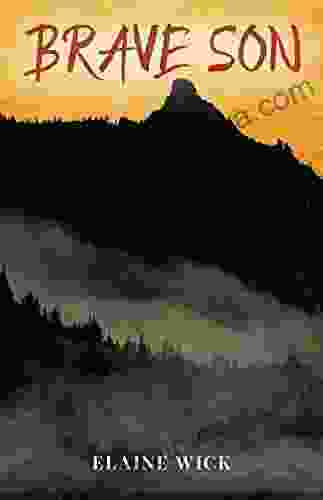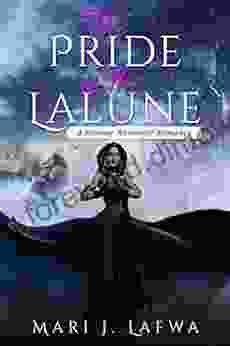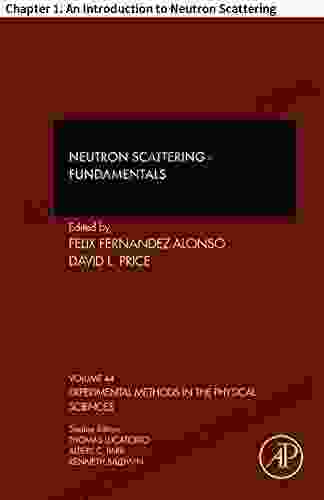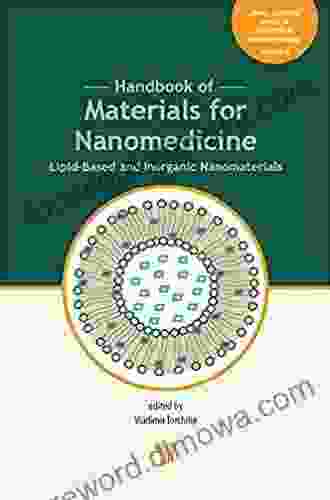Journey into the Unfathomable: Visions of Infinity - The Great Mathematical Problems


From the dawn of human civilization, we have been captivated by the enigmatic concept of infinity. It permeates every aspect of our existence, from the endless expanse of the universe to the intricate fractals that nature creates. In the realm of mathematics, the pursuit of understanding infinity has led to some of the most profound and perplexing questions that have ever been posed.
4.3 out of 5
| Language | : | English |
| File size | : | 5738 KB |
| Text-to-Speech | : | Enabled |
| Enhanced typesetting | : | Enabled |
| Word Wise | : | Enabled |
| Print length | : | 354 pages |
| Screen Reader | : | Supported |
In "Visions of Infinity - The Great Mathematical Problems", renowned mathematician and author Sir Roger Penrose takes us on an extraordinary journey into the heart of these enigmatic conundrums. This comprehensively revised and updated edition of his acclaimed masterpiece offers a captivating exploration of the seven greatest unsolved problems in mathematics, challenges that have tantalized the minds of the world's most brilliant thinkers for centuries.
The Poincaré Conjecture
One of the most famous mathematical problems of all time, the Poincaré Conjecture, has been likened to the search for the Holy Grail in mathematics. It asks: "Is every simply connected, closed 3-manifold homeomorphic to a 3-sphere?" Essentially, it seeks to determine whether every three-dimensional shape that is equivalent to a sphere in terms of its topological properties is actually a sphere itself.
For over a century, mathematicians wrestled with this enigmatic problem, but it remained unsolved until 2002 when Grigori Perelman made a groundbreaking breakthrough. His proof, which was published in a series of three papers, revolutionized the field of geometry and finally laid the Poincaré Conjecture to rest.
The Riemann Hypothesis
Another iconic mathematical enigma is the Riemann Hypothesis, proposed by German mathematician Bernhard Riemann in 1859. It concerns the distribution of prime numbers, the fundamental building blocks of mathematics. Prime numbers are whole numbers greater than 1 that cannot be evenly divided by any other whole numbers except 1 and themselves.
The Riemann Hypothesis predicts that the non-trivial zeros of the Riemann zeta function, a complex-valued function defined for complex numbers with non-zero real part, lie on a specific vertical line in the complex plane known as the "critical line". Despite intense scrutiny, the Riemann Hypothesis remains unproven, making it one of the most sought-after unsolved problems in mathematics today.
The Yang-Mills and Mass Gap Problem
In theoretical physics, the Yang-Mills and Mass Gap Problem is a formidable challenge in the realm of quantum field theory. It seeks to understand the behavior of certain subatomic particles called gauge bosons, which mediate interactions between other particles.
The problem consists of two parts: the Yang-Mills part, which aims to prove the existence of a mass gap in the spectrum of gauge bosons under certain conditions, and the Mass Gap part, which aims to prove the mass gap in a specific theory known as quantum chromodynamics, the theory of strong nuclear interactions. Despite decades of research, this problem remains unsolved, posing a significant obstacle in our understanding of the fundamental forces of nature.
The Hodge Conjecture
In algebraic geometry, the Hodge Conjecture is a profound problem that concerns the relationship between algebraic varieties and their de Rham cohomology. Essentially, it seeks to understand the topological properties of algebraic varieties by studying the spaces of harmonic differential forms on those varieties.
Proposed by mathematician Sir William Vallance Douglas Hodge in 1950, the Hodge Conjecture was initially formulated for projective varieties, but it has since been extended to other types of algebraic varieties. It was finally proven in 2019 by Claire Voisin, a French mathematician and recipient of the prestigious Fields Medal, one of the highest honors in mathematics.
The Navier-Stokes Equations
In fluid dynamics, the Navier-Stokes equations are a set of partial differential equations that describe the behavior of viscous, incompressible fluids. These equations are essential for understanding a wide range of fluid phenomena, from the flow of air around an airplane wing to the circulation of blood in the human body.
Despite their fundamental importance, the Navier-Stokes equations remain unsolved in the general case. The existence and smoothness of solutions to these equations is one of the most important unsolved problems in applied mathematics, with far-reaching implications for engineering and scientific research.
The P versus NP Problem
In computer science, the P versus NP Problem is a fundamental question that concerns the complexity of computational problems. P refers to the class of problems that can be solved in polynomial time, meaning that the amount of time required to solve the problem grows polynomially with the size of the input. NP, on the other hand, refers to the class of problems for which a solution can be verified in polynomial time, even if finding the solution itself may take exponential time.
The P versus NP Problem asks whether these two classes of problems are equivalent, or whether there are problems in NP that cannot be solved in polynomial time. This problem has profound implications for cryptography, optimization, and many other areas of computer science, and its solution is one of the most sought-after prizes in mathematics.
The Continuum Hypothesis
The Continuum Hypothesis, proposed by Georg Cantor in 1878, is a fundamental question in set theory. It asks whether there exists a set whose cardinality is greater than that of the set of natural numbers (also known as the "countable infinity") but less than that of the set of real numbers (also known as the "uncountable infinity").
The Continuum Hypothesis has been a subject of intense mathematical investigation and debate for over a century. It was finally shown to be independent of the standard set theory known as Zermelo-Fraenkel set theory with the Axiom of Choice (ZFC) by Kurt Gödel in 1938 and Paul Cohen in 1963. This means that the Continuum Hypothesis can neither be proven nor disproven within the framework of ZFC, and its status remains one of the most enigmatic open questions in mathematics.
The Significance of Visions of Infinity
"Visions of Infinity - The Great Mathematical Problems" is more than just a collection of unsolved puzzles. It is a testament to the power and beauty of human curiosity and the enduring quest for knowledge. Each problem presented in the book represents a fundamental challenge to our understanding of the natural world and the human experience.
By grappling with these problems, mathematicians push the boundaries of human knowledge and lay the foundations for new scientific and technological breakthroughs. The pursuit of these grand challenges is not only about finding solutions but also about the journey of discovery and the inspiration it provides for generations of mathematicians to come.
Reviews and Testimonials
"Visions of Infinity is a masterpiece of mathematical exposition, a mesmerizing exploration into the most profound and unsolved problems that have captivated the minds of the world's greatest mathematicians. Sir Roger Penrose's writing is both illuminating and accessible, making this book essential reading for anyone interested in the frontiers of human knowledge." - Neil deGrasse Tyson, Astrophysicist and Author
"Penrose's Visions of Infinity is an extraordinary tour de force, guiding readers through the labyrinth of unsolved mathematical problems with clarity, wit, and profunda
4.3 out of 5
| Language | : | English |
| File size | : | 5738 KB |
| Text-to-Speech | : | Enabled |
| Enhanced typesetting | : | Enabled |
| Word Wise | : | Enabled |
| Print length | : | 354 pages |
| Screen Reader | : | Supported |
Do you want to contribute by writing guest posts on this blog?
Please contact us and send us a resume of previous articles that you have written.
 Book
Book Novel
Novel Page
Page Chapter
Chapter Text
Text Story
Story Genre
Genre Reader
Reader Library
Library Paperback
Paperback E-book
E-book Magazine
Magazine Newspaper
Newspaper Paragraph
Paragraph Sentence
Sentence Bookmark
Bookmark Shelf
Shelf Glossary
Glossary Bibliography
Bibliography Foreword
Foreword Preface
Preface Synopsis
Synopsis Annotation
Annotation Footnote
Footnote Manuscript
Manuscript Scroll
Scroll Codex
Codex Tome
Tome Bestseller
Bestseller Classics
Classics Library card
Library card Narrative
Narrative Biography
Biography Autobiography
Autobiography Memoir
Memoir Reference
Reference Encyclopedia
Encyclopedia Tristan Jones
Tristan Jones Dove Winters
Dove Winters Donna Marsh
Donna Marsh Jack Fisher
Jack Fisher Edward Obaidey
Edward Obaidey Gabriela Vargas
Gabriela Vargas Dan Blank
Dan Blank Duncan Hamilton
Duncan Hamilton Dorothea Chan
Dorothea Chan Megaartvision Megaartvision
Megaartvision Megaartvision Tzeli Hadjidimitriou
Tzeli Hadjidimitriou Ed Southern
Ed Southern Kenneth G Dyall
Kenneth G Dyall Edward Tang
Edward Tang Terence Doyle
Terence Doyle Dr Joyce Starr
Dr Joyce Starr L D Valencia
L D Valencia Malcolm Smith
Malcolm Smith Tiana Warner
Tiana Warner Dr Jennifer T Edwards
Dr Jennifer T Edwards
Light bulbAdvertise smarter! Our strategic ad space ensures maximum exposure. Reserve your spot today!
 Bruce SnyderFollow ·4.7k
Bruce SnyderFollow ·4.7k Glenn HayesFollow ·16.9k
Glenn HayesFollow ·16.9k Isaac MitchellFollow ·11.7k
Isaac MitchellFollow ·11.7k Adrian WardFollow ·9.1k
Adrian WardFollow ·9.1k Jett PowellFollow ·2.4k
Jett PowellFollow ·2.4k Dale MitchellFollow ·8k
Dale MitchellFollow ·8k Sam CarterFollow ·3.7k
Sam CarterFollow ·3.7k Vincent MitchellFollow ·15.9k
Vincent MitchellFollow ·15.9k

 Jacob Hayes
Jacob HayesBrave Son Elaine Wick: An Inspiring Tale of Triumph and...
Prepare to be captivated by...

 Dwight Bell
Dwight BellUnleash the Enchanted Journey: Discover "The Pride of the...
Embark on an Extraordinary...

 Winston Hayes
Winston HayesChess for Children: A Journey into the World of...
Unlock the Potential...

 Isaiah Price
Isaiah PriceDiscover the Enchanting West Coast with the West Coast...
Prepare to be captivated by...

 Shannon Simmons
Shannon SimmonsUnveiling the Enchanting Bond: Animals and the Human...
The Profound Connection: A Literary...
4.3 out of 5
| Language | : | English |
| File size | : | 5738 KB |
| Text-to-Speech | : | Enabled |
| Enhanced typesetting | : | Enabled |
| Word Wise | : | Enabled |
| Print length | : | 354 pages |
| Screen Reader | : | Supported |














